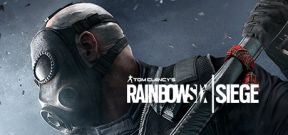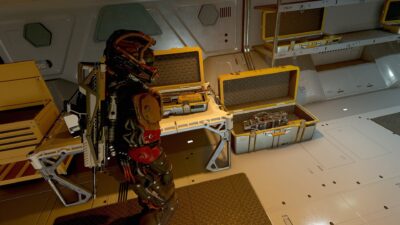
It’s been about four years since Rainbow Six Siege came out, and in that time, no competitor’s come even close to offering the same style of gameplay - not by a long shot. Upon launch, many reviewers described the game as a skeleton of what is to come, and with the benefit of hindsight, we can safely subsume that they weren’t wrong by any stretch of imagination. The amount of content that Siege offers today is downright astonishing, and far too much for anyone to expect there to be available at launch. For the developer, Ubisoft, to be able to bring the game to this level, there had to be a stable foundation in place, and in focusing on this at first, they kickstarted one of their most long-lasting projects yet.
With the release of Rainbow Six Siege: Burnt Horizon, Ubisoft drove home the point they’ve been making ever since the game was released - reinventing the franchise was not only a good thing, both for players and for the company, but it was also somewhat necessary, because it filled a niche that was painfully underserved up until then. For some context, let us take a look at the game’s Steam statistics for a quick bit.

As the chart above shows, Rainbow Six Siege has seen steady growth since its 2015 release, with the game plateauing since 2018. This is not a bad thing, because it proves the fact that Siege is an established multiplayer experience, even after the likes of Fortnite and Apex Legends stole most of the spotlights that once shone on it. The argument to be made here is that, if a game can go without heavy advertising and still maintain a concurrent userbase of about 70,000 players, that’s pretty damn solid.
Though virtually everyone knows what Rainbow Six Siege is all about, it might do well to reiterate and carefully define the exact niche it serves at the time of writing. In terms of gameplay, Siege strikes a curious balance between arcade FPS mechanics and a hardcore tactical shooter. The game achieves this goal by establishing three layers of mechanics, all of them interacting with one another at any given moment. Firstly, there’s the moment-to-moment gameplay, which is that of a bog-standard first-person shooter, though one that features leaning - a mechanic many thought was lost to history. Secondly, there are the Operator characters, each of which has a particular gameplay mechanic they exploit via various skills, abilities, and weapons. Thirdly (and perhaps most importantly), there’s the intricate destructibility of Siege’s levels, allowing for incredible and often unexpected plays to occur, given that players think outside the proverbial box.

Players who experienced the initial release of Call of Duty 4: Modern Warfare first-hand might recall what sort of a massive gamechanger it was to learn that bullets had special penetrative properties which depended on what sort of material they hit. Firing an anti-materiel round at an enemy hiding behind a sheet of plywood resulted in a sure takedown, while lower-caliber rounds struggled to do the same even at point-blank range. This alone set an incredible precedent back in the day, and when Siege came to the forefront with the opportunity for players to blow holes in walls, it was something else entirely.
And it wasn’t just Rainbow Six: Siege’s fascinating philosophy of pinpoint destructibility that came into play when it launched. Letting players choose characters who set up bear traps, roll down barricades and plant C4 on the floor to get the literal drop on enemies underneath fostered incredible creativity that had - arguably - never been seen before. Some might cite the likes of Battlefield with doing something similar earlier, but not even Bad Company 2 compares with the granularity of Siege in practical terms.

The catch, of course, is that Siege offers virtually no single player to speak of. Whereas previous Rainbow Six entries focused primarily on players squaring off against numerous AI-controlled enemies, allowing them to play out detailed tactical plans however many times they wanted, the only solo activity that Siege affords is that of Terrorist Hunt, making it a poor fit for those of us who dislike multiplayer for this or that reason. Regardless, Siege is an experience unlike any other, and recommendations are definitely in order.
Four long years after the release of Rainbow Six: Siege, no competitor has offered any sort of retort to Ubisoft’s success. With unrelenting and continued development, developers have proven that it pays to invest into certain niche titles long-term, putting the mechanics of Siege front-and-center, and then developing expansion packs only after the game had already been well-established. It is curious how no other game developers have attempted to dethrone Siege yet, instead trying their hand mostly on various battle royale thingamajigs.

Perhaps that is precisely where the continued success of Rainbow Six: Siege lies - in the fact that no one else is even trying to produce a hardcore and somewhat punishing FPS where tactics come before all else, and failure to comply with the rest of your team often leads to assured defeat. Even if another tactical shooter of this calibre were to be released today, it would be hard-pressed to compete with what is by now a considerably polished, balanced, and fascinating exercise in crafting a unique multiplayer experience.
To conclude, even four years after its launch, Rainbow Six: Siege rules its niche with an iron fist, and the game keeps evolving and getting better with each new update and piece of downloadable content released. There’s nothing quite like it, and with six more years of continued development ahead (according to Ubisoft themselves), perhaps it’s time to admit that going with a dedicated multiplayer release was the right thing to do.

















